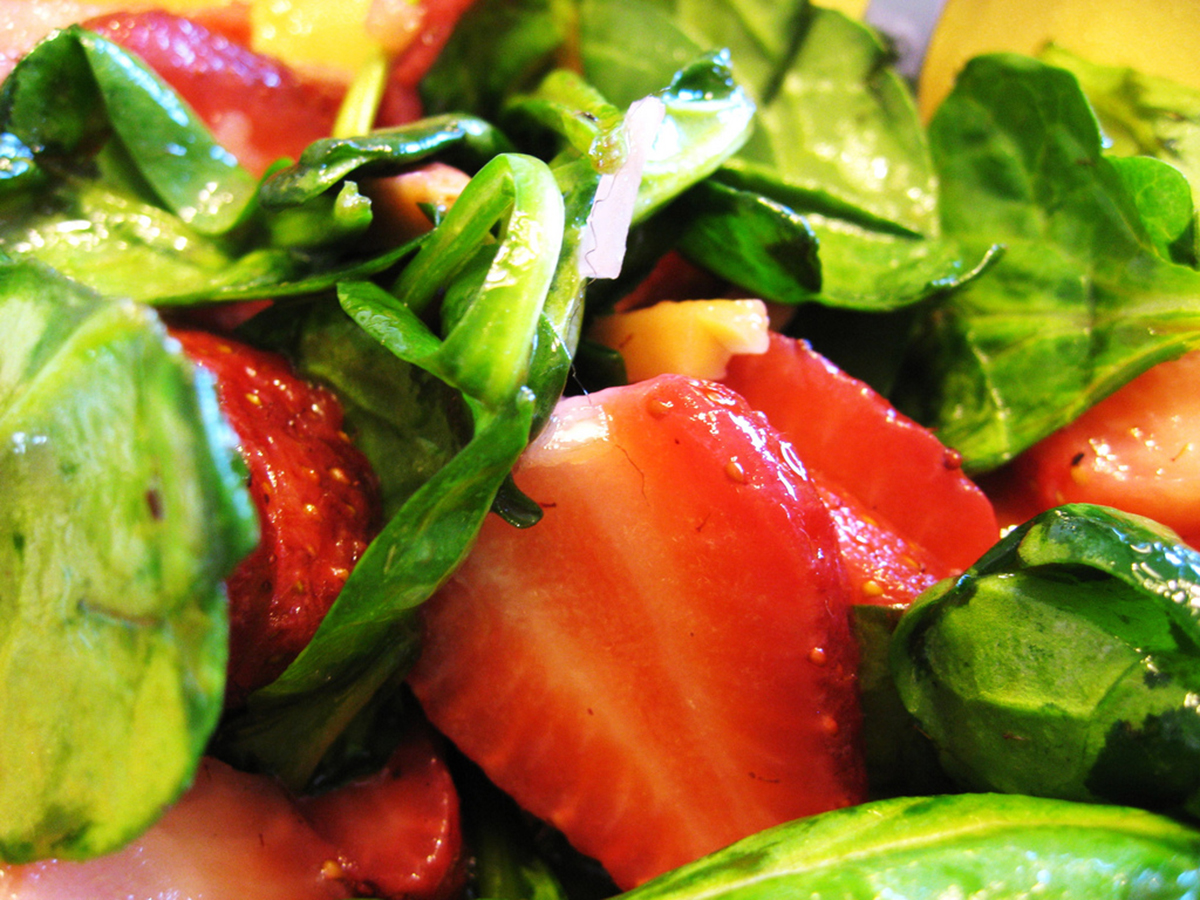Table of Contents
Bell Peppers
Just half a cup of chopped red or yellow peppers supplies more than 200% of the Daily Value for vitamin C. Red peppers also contain beta-carotene and the phytonutrients lycopene, beta-cryptoxanthin, lutein and zexanthin. Peppers are also a decent source of fibre, folate and magnesium.

Cabbage
Cabbage contains the B vitamins thiamin (vitamin B1) and riboflavin (vitamin B2). It also contains the minerals magnesium, calcium and potassium. Cabbage also contains additional antioxidant compounds, known as indoles and sulphoraphane. Red cabbage is significantly more nutritious then white cabbage, having higher antioxidant polyphenols. Red cabbage also has a good vitamin C content.
Some of the lesser used but not to be forgotten salad veggies include:
Beets
Beets can be enjoyed raw and grated or cooked and cooled and added to salads. They are a good source of folate and are also rich in the electrolyte minerals magnesium and potassium.
Celery
Celery contains vitamin C, and is a good source of folate, thiamine, riboflavin and vitamin B6. It also contains a good dose of calcium and magnesium as well as phosphorous and iron.
Broccoli and Cauliflower
These cruciferous sulphur-containing vegetables contain anti-cancer anti-oxidant and are powerhouses of nutrition, particularly vitamin C and minerals. Add then raw or lightly steamed to salads.
Asparagus
Tinned or fresh asparagus is a great way to jazz up a green salad. They are highly nutritious and also contain compounds that help the detoxification and elimination systems of the body.
Topping It Up
It's time to get creative with toppings now. Some other plant based additions for salads that make them exciting include,
Fruits. Fruits like berries, pears, apples and papaya make excellent salad additions and god well with certain other ingredients
Cheeses. Parmesan, feta, mozzarella, halloumi and other cheeses provide saturated fat, protein and calcium to a salad.
Lean Meat. Add sliced grilled chicken breast or pulled chicken as a low fat protein source. Some sliced fillet or sirloin is another good idea.
Tuna or salmon. These fish go well in many salads and add a low fat protein source in the case of tuna or an omega 3 source in the case of salmon.
Nuts and seeds. Flasxeeds, chia seeds, poppy seeds, sesame seeds, pumpkin seeds, cashews, almonds and the like add an essential fatty acid boost and a delicious crunch to your salad.
Avocado. This delectable fruit is an excellent source of vitamin E and essential fats.
Dressings
Good raw oils to use on salads include olive, flaxseed, grapeseed, sesame and avocado oil. Add some fresh lemon juice, soya sauce, honey, or xylitol for some sweetness and spruce up with herbs and spices.
See Also: Fruits And Veggies: 7 Superfood Smoothie Recipes
Recipes
Spinach and Strawberry Salad (Serves 4)
Ingredients:
- 3 cups baby spinach leaves
- ½ red onion, chopped
- 10 fresh strawberries cut into halves
Dressing:
- 1 Tbs. olive oil
- 1 Tbs. balsamic vinegar
- 2 tsp Worcestershire sauce
- 1 tsp poppy seeds/sesame seeds
- 2 tsp brown sugar
(Combine the salad ingredients with the dressing)
Oriental Chicken Salad (Serves 4)
- 1 cup coleslaw mix, chopped (carrots and white cabbage)
- 1 cup red cabbage, chopped
- 1 spring onion, chopped
- 1/4 cup slivered almonds
- ¼ cup sesame seeds
- 2 chicken breasts, sliced
- 1 Tbs. sesame oil
Dressing:
- 2 Tbs. sesame oil
- 2 Tbs. soya sauce
- 2 Tbs lemon juice
(Place the almonds and sesame seeds in a non-stick pan and cook on high heat until golden. Lightly fry the chicken breasts in sesame oil and set aside to cool. Combine the salad ingredients with the almonds, sunflower seeds and chicken and mix in with the dressing).
- Photo courtesy of kate hiscock by Flickr: www.flickr.com/photos/slightlyeverything/7685364860
- Photo courtesy of Plat by Flickr: www.flickr.com/photos/21993940@N00/3435951126


Your thoughts on this